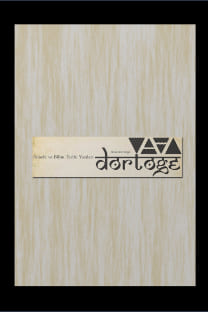Herbart’ın Geometri Felsefesi ve Riemann Geometrisi Üzerindeki Etkisi
Herbart’s Philosophy of Geometry and Its Infl uence on the Riemann’s Geometry
G.F.B. Riemann, J.F. Herbart, space manifold.,
___
Detlef, L. (1999). Turning Points in the conception of mathematics, Bernhard Riemann 1826–1866: Birkhauser.DiSalle, R. (2006). Understanding Space –Time, Cambridge University Press, New York.
Eric, C. Banks (2005). “Kant, Herbart and Riemann”, Kant Studies, Vol 96 Issue 2, s.208- 234.
Ferreiros, J. (2007). Labyrinth of thought: a history of set theory and its role in modern mathematics. Basel, Switzerland; Boston: Birkhauser.
Helmholtz, H. V. (1977). Epistemological Writings, Boston Studies in the Philosophy of Science, ed.Robert T., S Cohen and Marx W. Wartofsky, Dordrecht Reidel Publishing, içinde s.39-71.
Kant, I. (2004). Metaphysical Foundations of Natural Science, translated and ed. M. Friedman, Cambridge University Press.
Russell, Bertrand (1956). An Essay on Th e Foundations of Geometry, Dover Publications.
Scholz, E. (1982). “Herbart’s infl uence on Bernhard Riemann”, 9, Historia Mathematica, s. 413-440.
Torretti, R. (1978). Philosophy of geometry from Riemann to Poincare. Dordrecht: Reidel: D. Reidel Publishing Company.
- ISSN: 2146-7064
- Yayın Aralığı: Yılda 2 Sayı
- Başlangıç: 2012
- Yayıncı: Nobel Akademik Yayıncılık
Onto-Teoloji Kritiği Bağlamında Negatif Teoloji Değerlendirmesi
Zihinsel Alanda “Ben Hissi” Neye Karşılık Gelir?
Melek Dosay GÖKDOĞAN, İrem ASLAN, Sevim TEKELİYE
Mukayese Edilemezliği Yeniden Düşünmek: Bağ-Kurucu Yapılar
Ali Suavi’nin “Hesâb el-Tamâmî ve el-Tefâzül” Adlı Makalesi
Günlük Ağacı (Liquidambar orientalis, Sığla)
İnsan Doğası Üzerine Bir Tartışma: Hume ve Nietzsche
1277 Yasağı ve İmam Gazzâlî’nin Tehafütü Arasında Bir Mukayese
Türkiye’de Süne ile Mücadelenin Tarihsel Gelişimi
Atilla GÖKDOĞAN, Uzman Ziraat MÜHENDİSİ, Gıda TARIM
